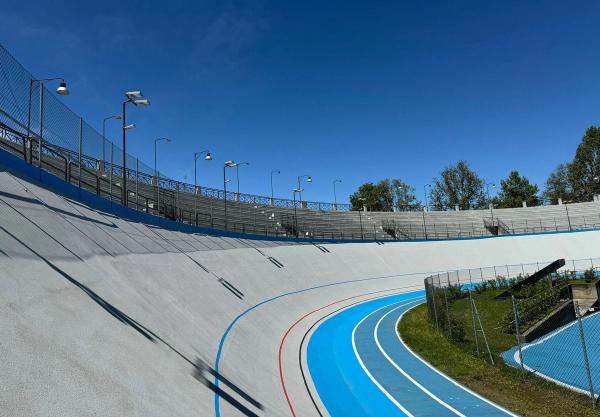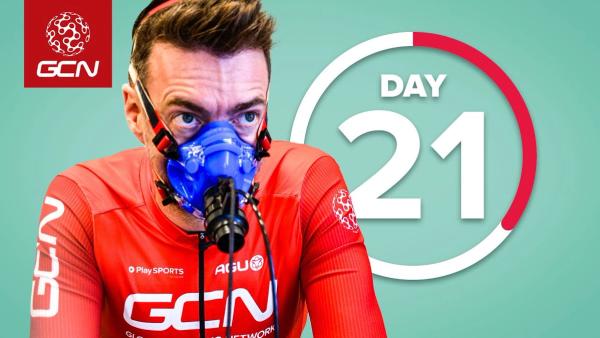Strength training for cyclists: is it worth it?
Many cyclists dislike strength training, but it can have a positive impact on performance as well as helping to reduce the risk of injuries
Tom Hallam-Gravells
Online Production Editor
Cyclists tend to neglect strength training, it’s no secret. The internet is full of articles highlighting the benefits of strength-based training which, to your average cyclist, is a method of self-inflicted torture. We’re even guilty of it here at GCN, putting our poor presenters through strength-based suffering on more than one occasion (this one featuring Si Richardson is one of our favourites).
But, whether we like it or not, strength training is a key part of the recipe for cycling success and is something cyclists should add to their routines on a semi-regular basis. Not convinced? Here are all of the benefits of strength training for cyclists and how you can incorporate these exercises into your regular routine.
Benefits of strength training for cyclists
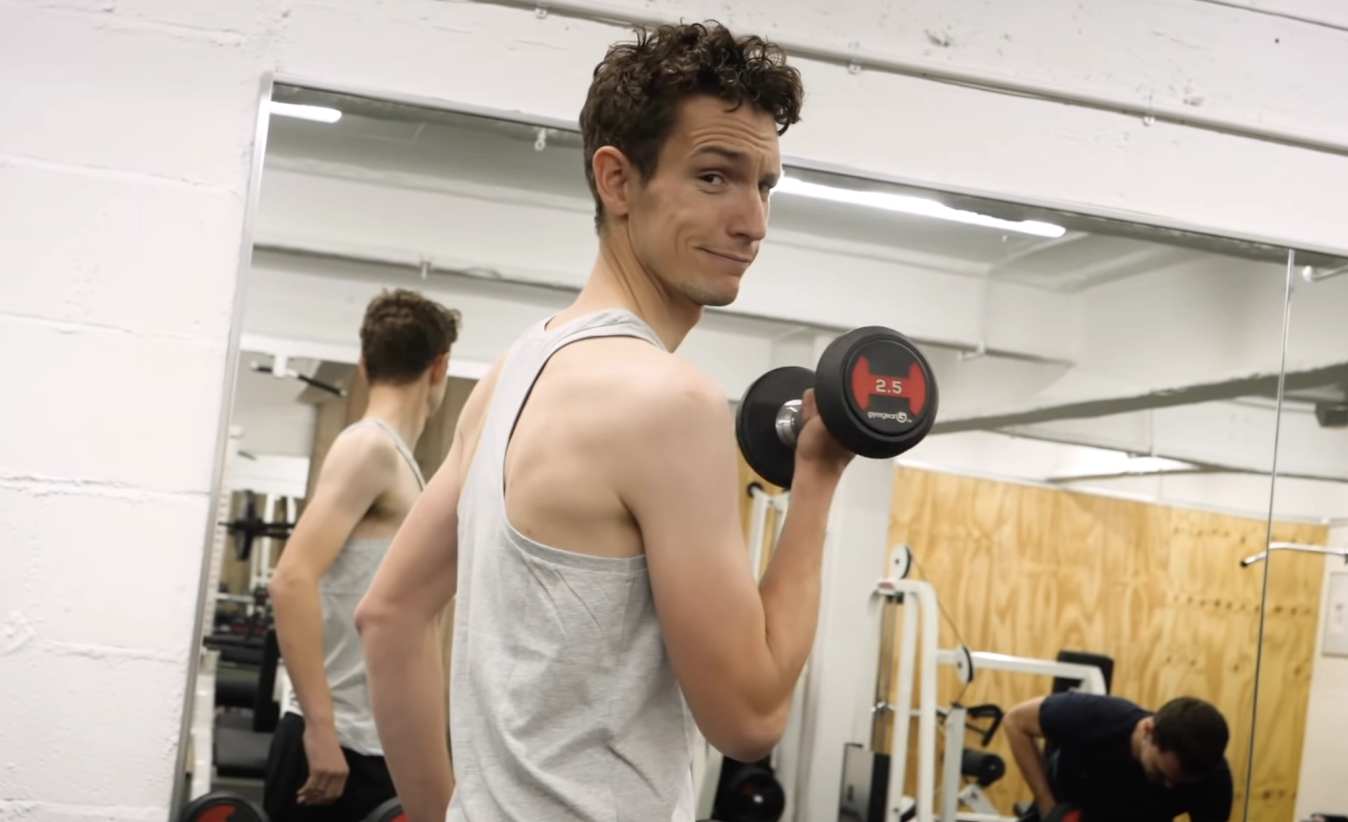
© GCN
Cyclists aren't exactly renowned for upper body strength, as Si Richardson is perfectly demonstrating
Those hoping for a strength-training reprieve are going to be disappointed. The truth is, it really does have a lot of benefits for cyclists.
Here are just a few ways in which strength training can benefit cycling performance.
Strength training improves cyclists' leg strength
Okay, this one shouldn’t be surprising. Leg exercises increase muscle strength, leading to greater power output on the bike. There’s plenty of research into this with varying opinions on how much it’ll boost power numbers. Don’t expect to suddenly be putting out pro-level numbers, but it should lead to some minor improvements.
One study published in the Scandinavian Journal of Medicine and Science in Sports found that young riders who completed heavy strength training achieved better “peak power output during the Wingate test, peak aerobic power output (Wmax) ... and earlier occurrence of peak torque during the pedal stroke” compared to those who didn’t.
Improved posture for better efficiency
Strength training for cyclists isn’t just about the legs, core strength exercises are also important. This is the part that cyclists struggle with the most. All of the effort of cycling goes through the legs, so a little leg strength training isn’t too arduous. Core exercises? That’s a different matter altogether, enough to give weedy cyclists nightmares.
Increased core strength has big benefits, though, leading to better stability and posture on the bike. Unlike other sports, cycling is very static with the only variation in body position coming when riding out of the saddle or changing hand positions. Holding that static position requires a strong core, and this is especially important when fatigue kicks in, at which point many cyclists lose form. That leads to poorer efficiency. However, with some core-strength training, you can maintain a strong posture for longer, leading to a more efficient ride.
Injury prevention
Cycling puts lots of strain on certain muscle groups due to the repetitive nature of pedalling, which can lead to muscle imbalances. That’s bad not only for the muscles, but also for the connecting joints and ligaments, and can lead to injuries and repetitive aches and pains. Strength training will improve muscle balance, helping to prevent the risk of injury.
Better FTP
All of these factors will ultimately lead to better performance on the bike which in turn should lead to a welcome boost to that precious FTP (functional threshold power) figure. For those not aware, FTP is the maximum amount of power a rider can sustain for around an hour of riding and is the benchmark by which most cyclists judge their fitness.
We're not saying it's going to rocket up because of strength training, as this is only one part of the overall performance equation. However, once all of those parts meet to complete the equation, performance markers start trending upwards, which is backed up by this study in the Biology of Sport journal.
How to start strength training
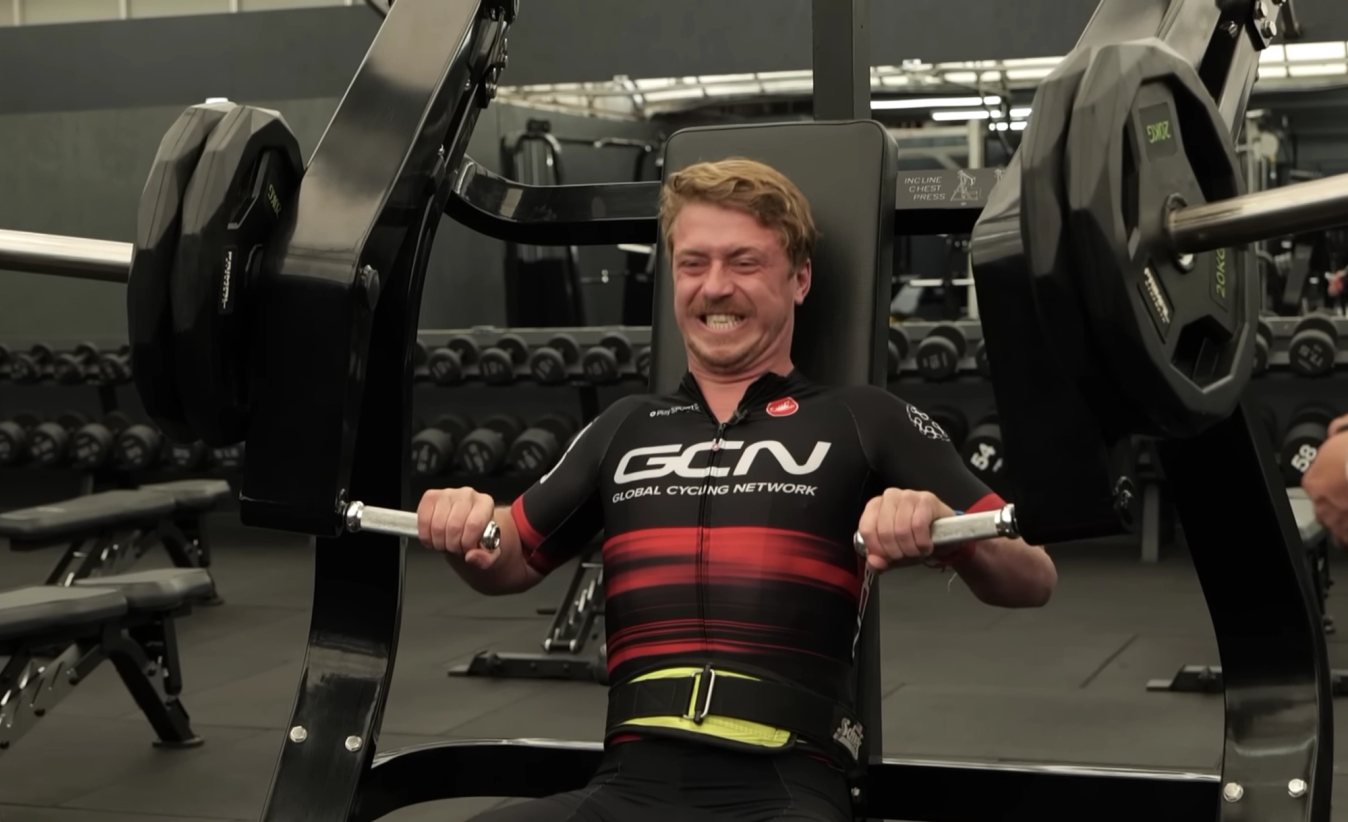
© GCN
Don't bite off more than you can chew in your first few sessions
Strength training isn’t particularly enjoyable for most cyclists, but it is important.
By targeting certain muscle groups through specific exercises, you can improve power output leading to enhanced performance. Of course, performance isn’t all that matters. For many cyclists, it’s not important at all. But even for those who have no interest in power numbers, taking time to complete strength training can help to prevent injuries, and improve posture and efficiency.
Start strength training in the off-season
It’s best to start strength training in the off-season as it will lay the foundations for the year ahead. During the winter months, most cyclists spend a little time away from the bike or at least take the intensity of their riding down a notch or two. When it's time to start looking towards the season ahead and planning your training, try to incorporate strength exercises into your routine.
Keep strength training sessions short
A few short, 20-minute sessions a week is enough, although it can be even less if you’re struggling for time. Don’t be put off by aching muscles either - they’ll naturally be sore afterwards if you’re not used to the exercises. If it becomes a big problem, simply reduce the number of sessions per week and then slowly increase them again over time.
Use a structured training plan
Most importantly of all, try to be structured. This is really important for what is - for many cyclists - more of a chore. You’re much more likely to regularly complete strength training sessions if you plan them into your schedule.
That's also true for every type of training, which is why training plans are so effective. Once you take away the thinking or decision of what workout to do, as a training plan will do, it's much easier to motivate yourself. Creating a training plan can be difficult but we've got some handy tips you can check out below. Many training platforms like Wahoo also integrate strength training into their plans too.
- Read more: How to make your own training plan
Bike-based strength training
Naturally, all bike exercises will strengthen your legs, but some will achieve more than others. Targeted exercises like low-cadence drills take more of the strain away from the cardio system and dump it onto the muscles, leading to a leg-burning workout.
Riding at lower cadences is a good way to prepare for climbing when riders often pedal at a slower rate due to the gradient, but any added strength will also translate to pushing a harder gear on the flat.
GCN's favourite strength training exercises for cyclists
So, which exercises should you be doing? There are plenty of ideas and sessions out there, including some we’ve tried. We recently enlisted James 'Hank' Lowsley-Williams to try out six beginner strength training exercises for cyclists, which are a great place to start. Here's how to do them.
Static split squat
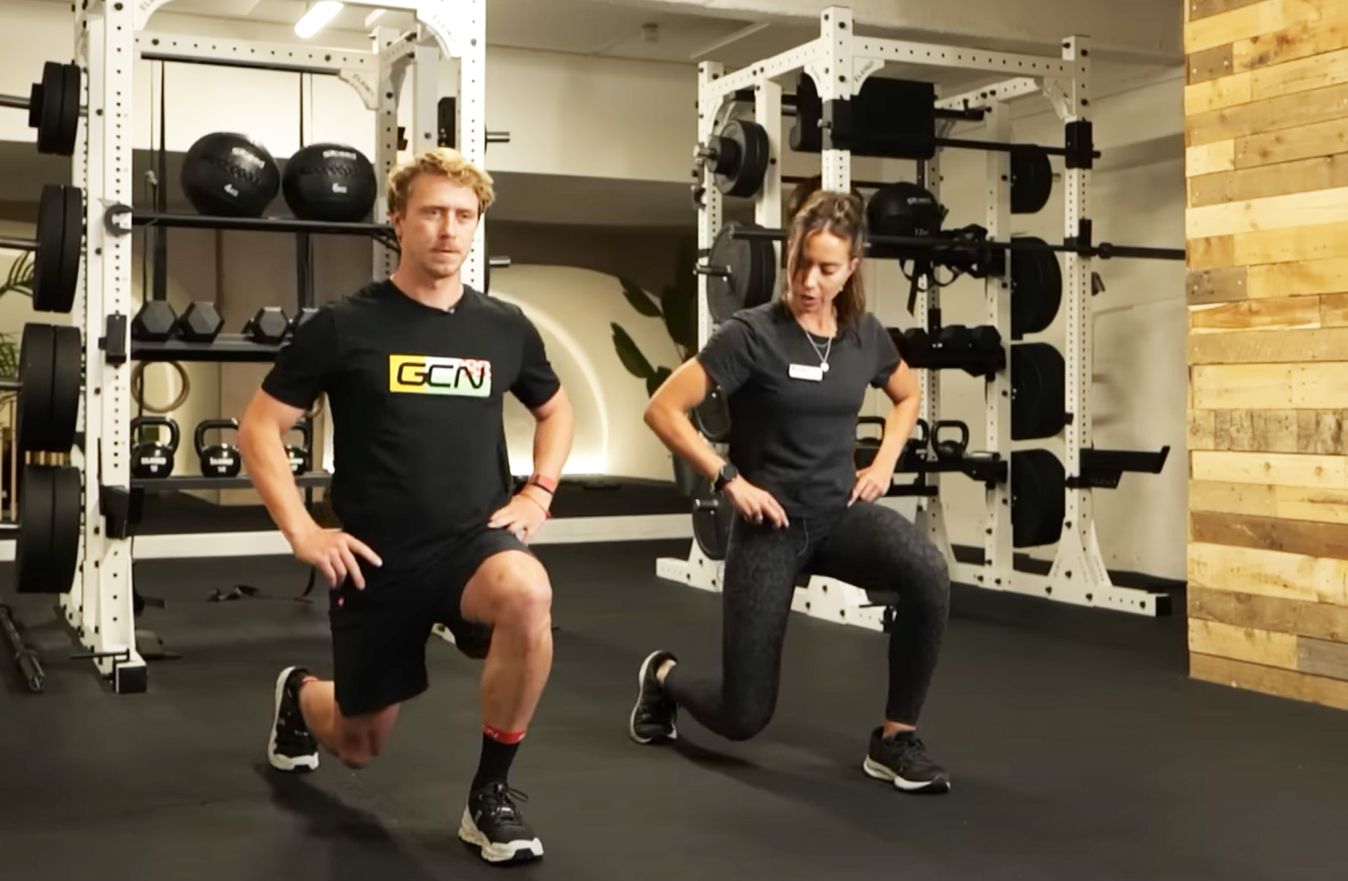
© GCN
A static split squat
- Stand in a normal upright stance and then take a slight step backwards with your right leg
- Keep your hips square and make sure you're on the toes of your right foot
- Drop your knee down towards the ground but don't let it touch the floor. Hold it there for a second and then drive back up to your original position through your left leg
- Complete 8-12 reps and then repeat the exercise for the opposite leg
Body weight squats
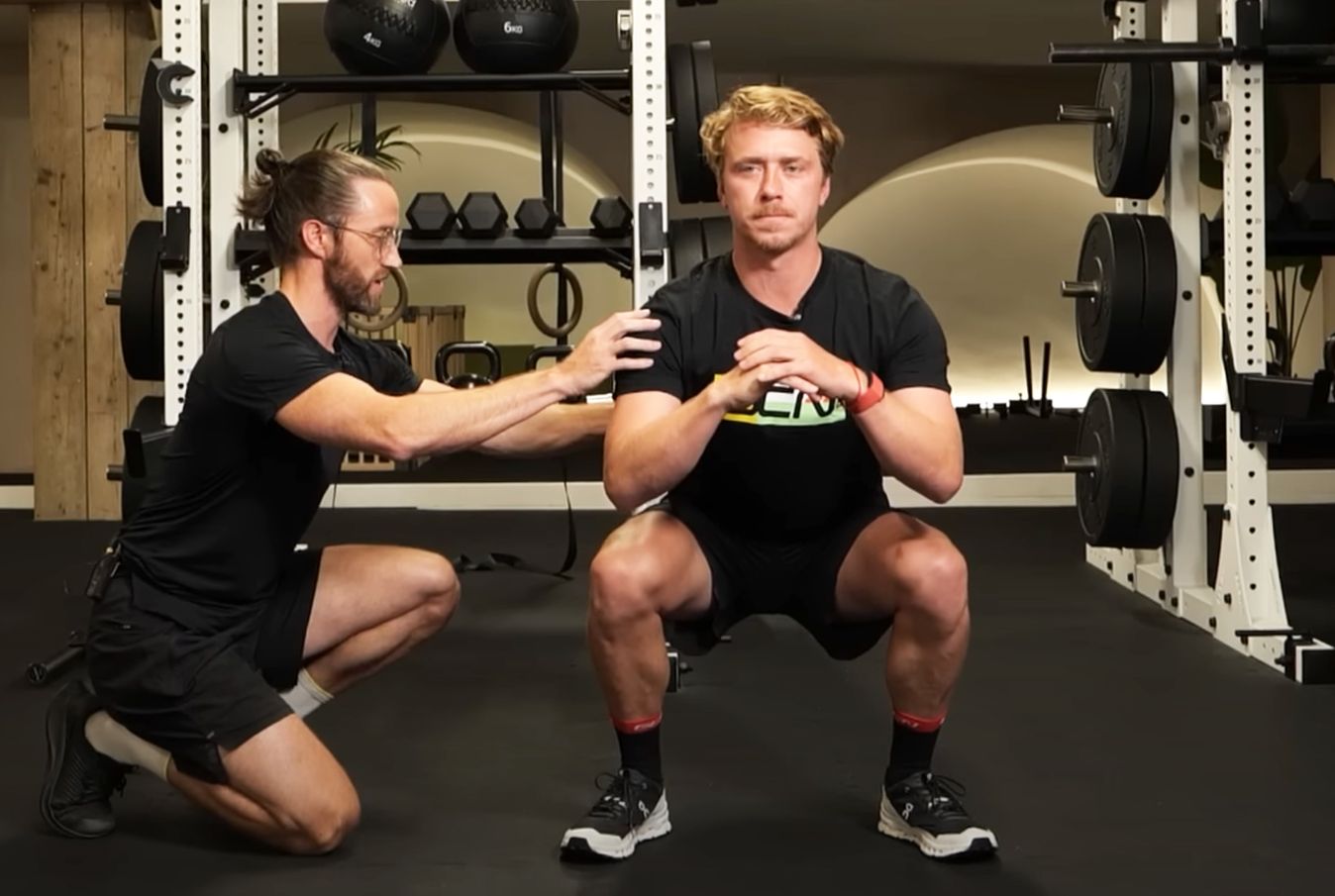
© GCN
Body weight squats can improve leg strength
- Stand with your feet just over shoulder-width apart
- Squat down, allowing your knees to arrow outwards, until your thighs are roughly at a right angle with your lower legs
- Hold that position for three seconds and try to keep your back straight and as upright as possible
- Once the three seconds are done, rise back to your standing position
- Repeat the squat for around 10-20 reps
Shoulder tap plank
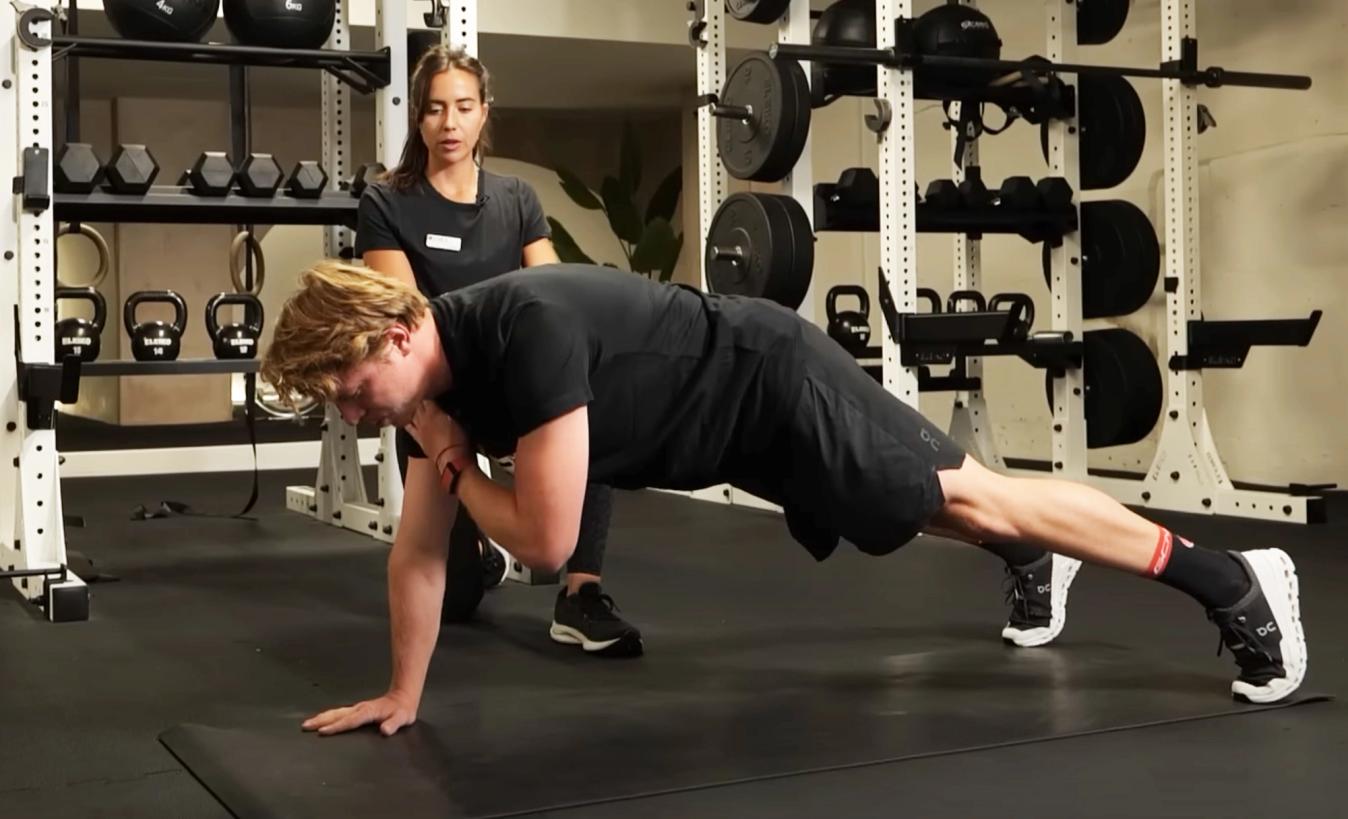
© GCN
Try to keep a straight body while in the plank position
- This is slightly more difficult than a traditional plank
- Take a traditional tall plank position with your hands on the floor, making sure your arms are straight and directly under your shoulders. Your feet should be extended out and roughly shoulder-width apart
- Try to keep a straight body - don't allow your hips to sag inwards
- Take one arm off the ground and touch the opposite shoulder, before returning it back to its original position on the floor
- Alternate the same process between each arm, making sure to pause briefly as each hand touches a shoulder
- Aim for 10-20 reps in total
Bear crawl

© GCN
The bear crawl may look weird but it's a great strength exercise
- Lower yourself onto your hands and knees. Make sure your arms go vertically up to the shoulders and the upper leg goes vertically up to the hips
- Raise your knees off the floor, putting your weight onto your toes
- Make sure your back is flat throughout and try to keep the vertical angles - this will ensure your core reaps the full benefits
- Aim to complete this exercise for between 30 seconds and one minute
Glute hamstring march
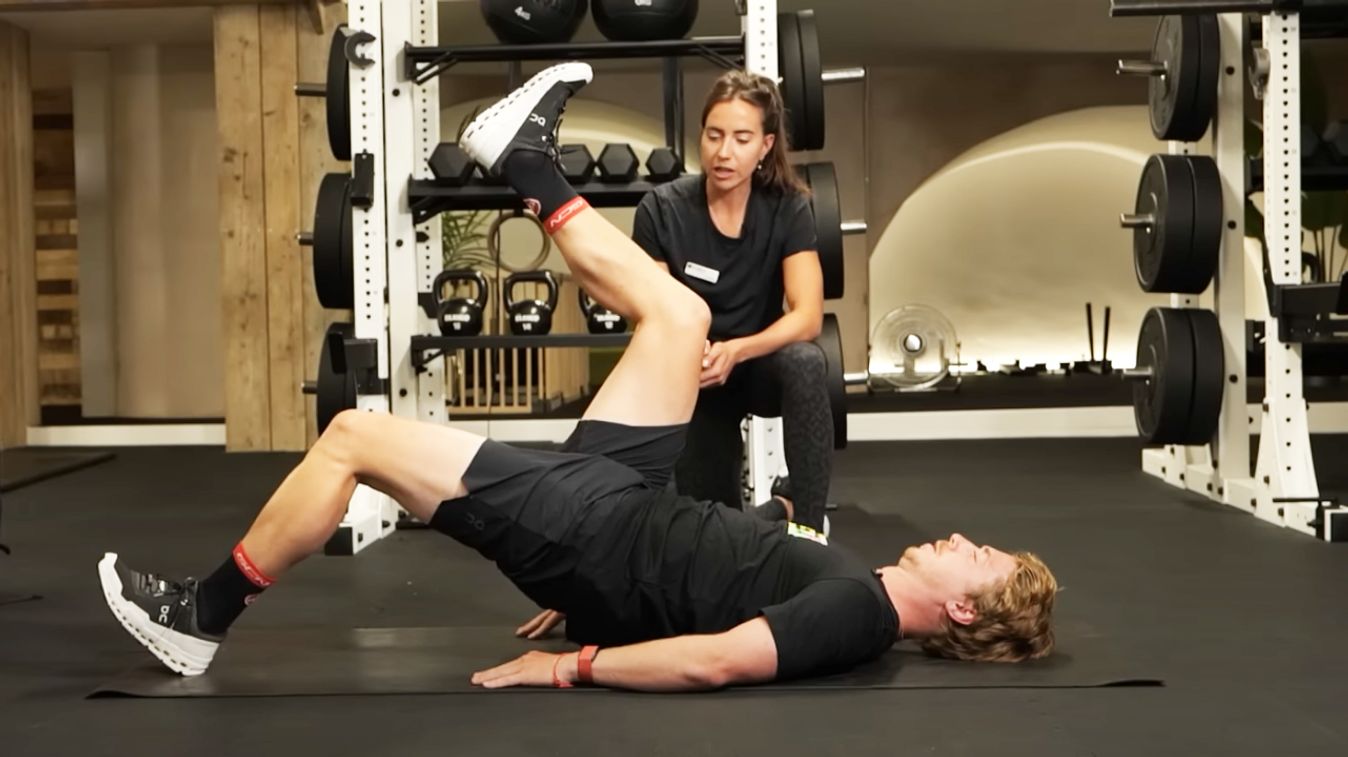
© GCN
The glute hamstring march
- Lay flat on your back. Bring your knees slightly closer towards your body while keeping your feet flat on the ground
- Lift your toes so that your feet are balancing on their heels
- Pushing through your heels, lift your hips until your upper body is parallel
- Alternating between each leg, lift your leg off the floor and drive your knee towards the torso as far as possible
- Keeping a slight bend in the knee, hold the position for three seconds and then lower your leg back onto the heel of your foot
- Aim for 10 reps on each leg
Step up
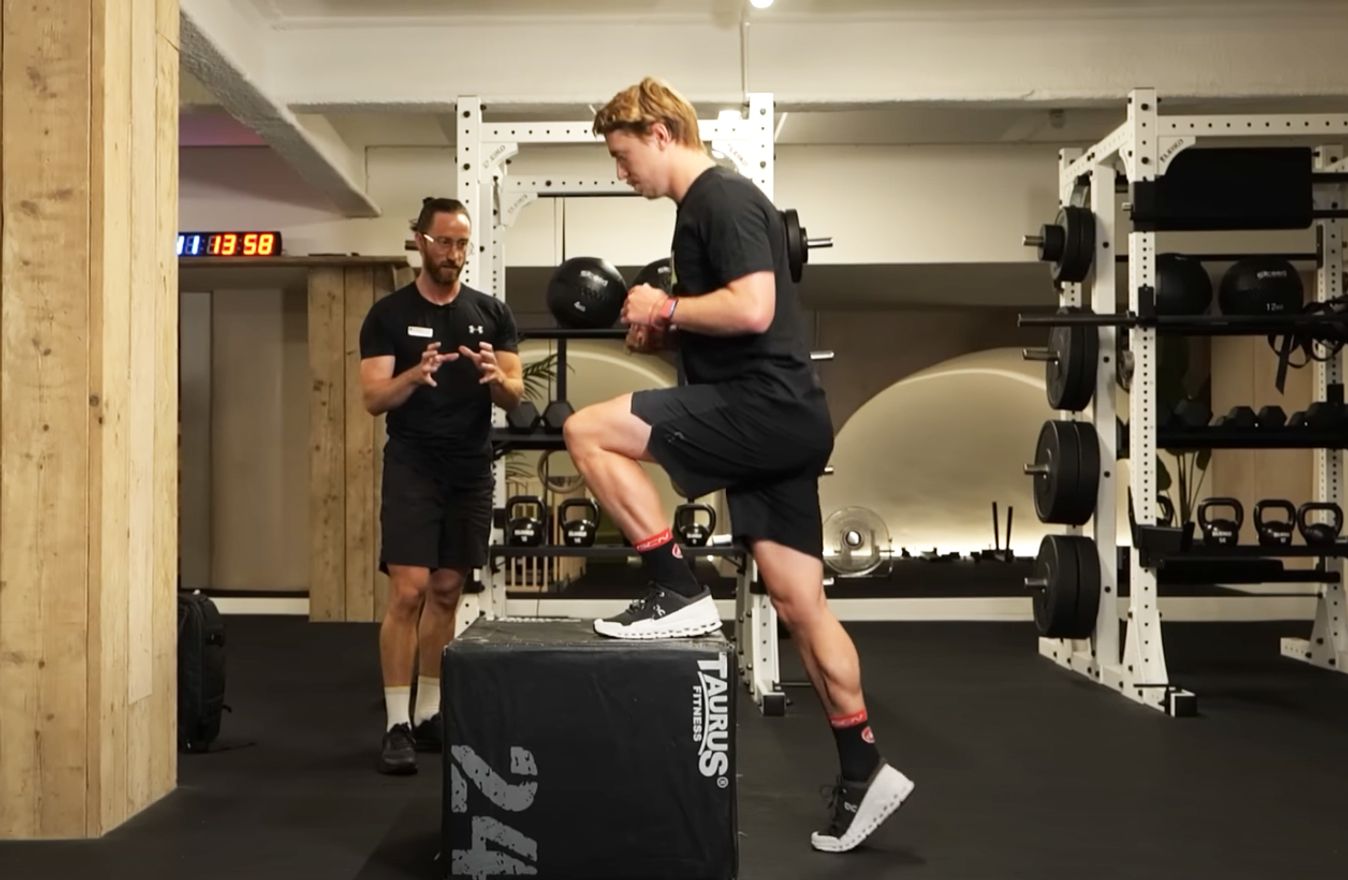
© GCN
Use your lead leg to drive up
- For this, you'll need a prop to step up on. This can be a garden wall, some steps or any other secure object that will give you a little bit of elevation
- Standing in front of the object, put one foot on the platform while leaving another on the ground
- Lean forward into the leg that is on the platform and then drive up through that leg until your other foot touches the platform, before slowly lowering it back down to the ground
- Make sure that all of the power is generated by the lead leg on the platform and not through the leg on the floor
- Complete five reps on one leg and then switch around to the other leg
These six exercises will provide a great foundation as you start strength training. As you build up strength and your comfort with them, start increasing the number of reps and introducing new exercises too.
You can explore more strength training videos and general fitness tips on the 'How To' section of the GCN website.
.jpg?rect=957,780,3097,3060&w=600&auto=format)






.jpg?w=600&auto=format)

